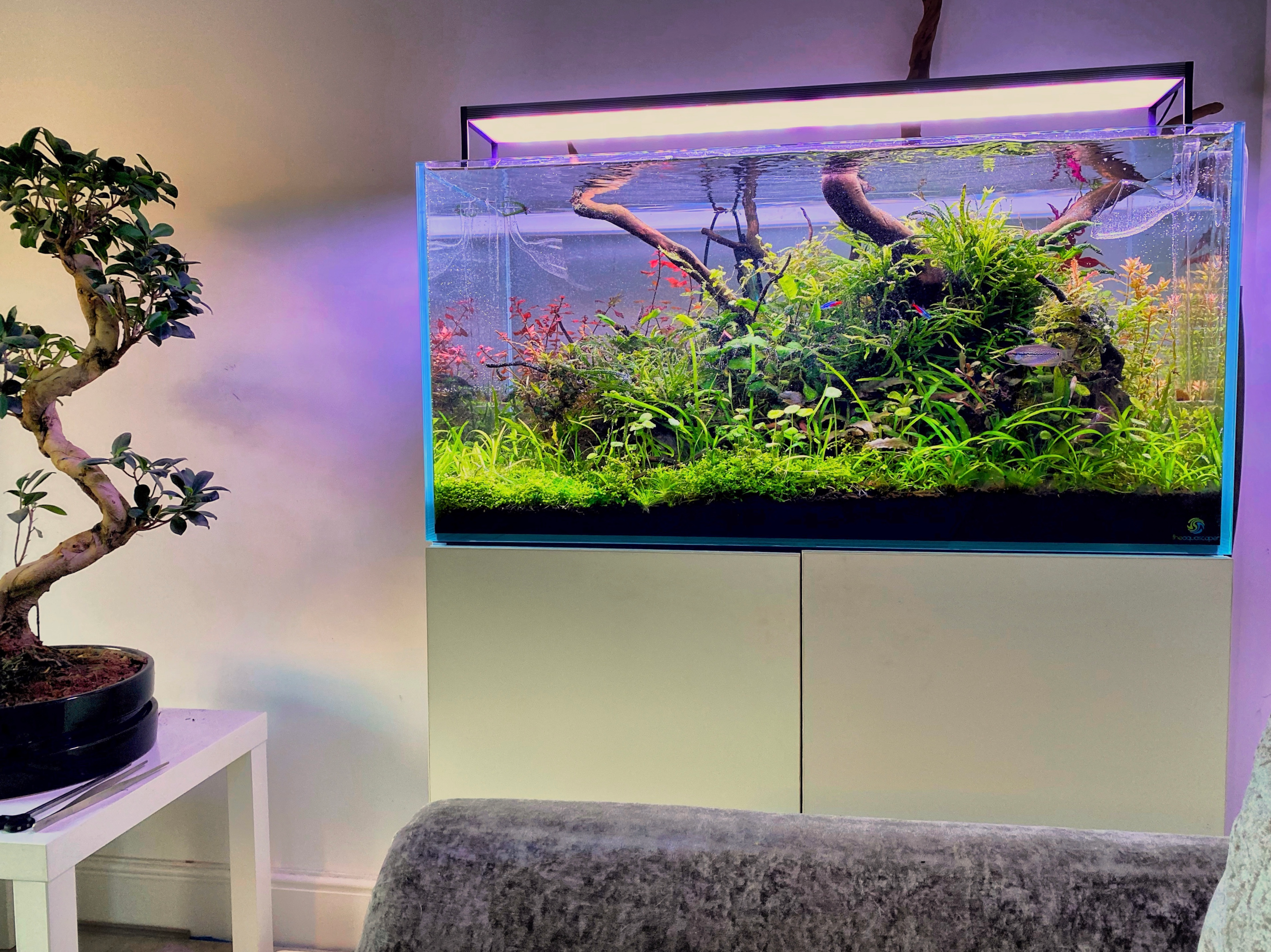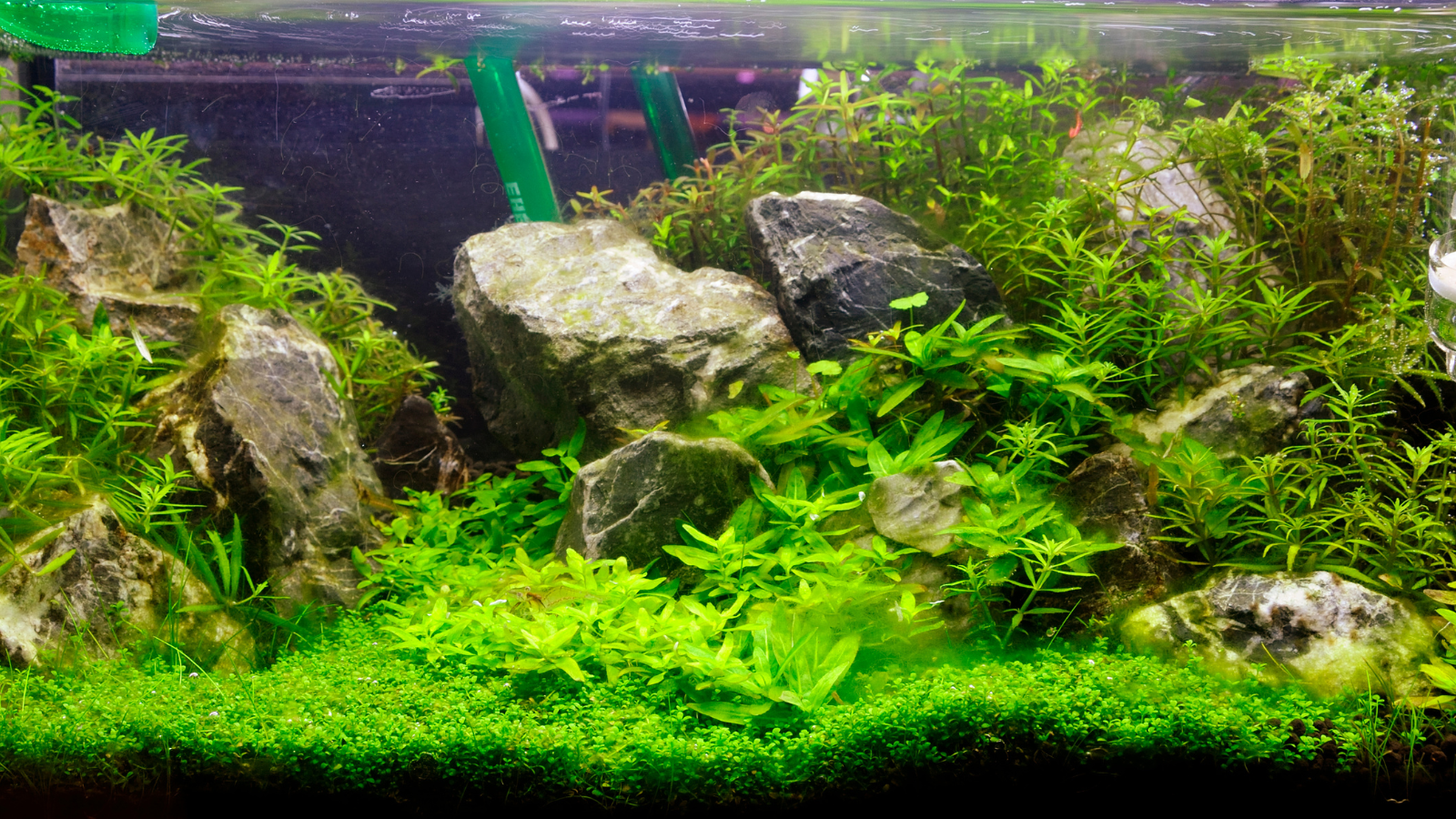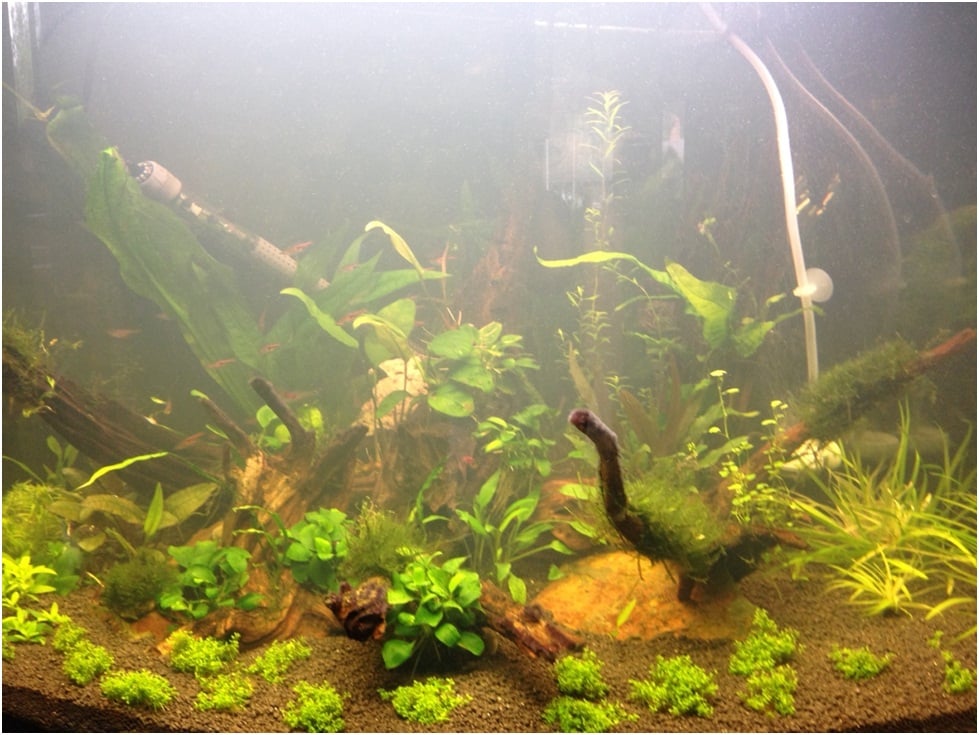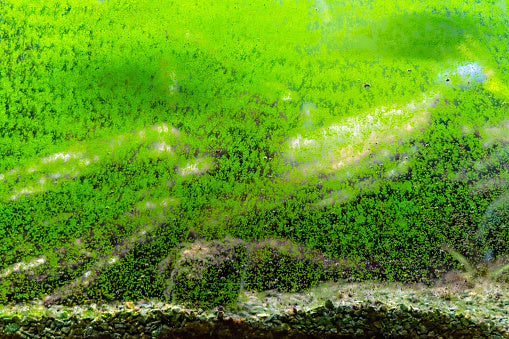
How to fight algae in the aquarium
The natural order of things when you have a fish tank is the appearance and algae growth. This situation is inevitable, and there are no aquariums without algae. It only proves that your fish tank is healthy and well-balanced.
A threat appears if you do not control algae growth, and algae blooms cover the entire aquarium water. But there are some ways to prevent algae overgrowth, and we will establish that in this article.
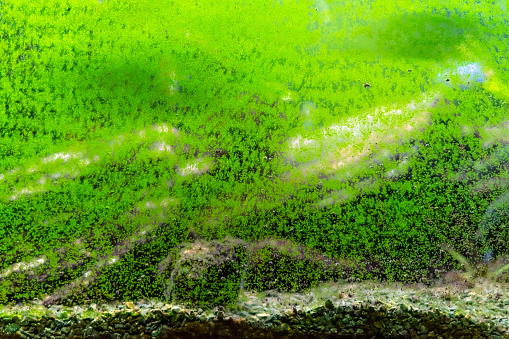
What factors are responsible for algae growth?
First of all, aquarium algae occur due to many reasons. Some of them are not as clear as you might think, so it is wise to know them before setting up the fish tank.
We can point out a few examples:
-
Excess nutrients, both macro and microelements, are delivered during fertilization. They are usually necessary to successfully grow our live plants, but too many nutrients can not be absorbed by them, and an algae problem may appear.
-
Too much light in the aquarium- if you put the fish tank near the window with direct sunlight, an algae bloom will surely occur. Artificial aquarium light in excess can result in the same consequences.
-
Lack of regular water changes. If you do not perform it every week, over time, nitrate and phosphate levels rise, and it will trigger algae growth.
-
A weak filter that is inadequate to the tank size.
-
Fish-only tanks tend to grow algae because aquarium plants are a natural competition for algae. Live plants need the same nutrients as algae. It means there is less for the algae.
-
Uneaten fish food, all the waste that fish produce, and decaying leaves lead to rising nitrogen levels- the main compound of plants and algae growth.
All the factors that were mentioned above, with different intensities, can induce algae overgrowth, so it is recommended to have an eye on pretty much everything :)
What types of algae are there?
A few types of aquarium algae can appear within freshwater aquariums. Here are some examples of them:
-
Green algae- beneficial algae if kept under control, and almost every tank will experience it at some point.
-
Blue-green algae- also known as smear algae. They are no true algae but cyanobacteria. It spreads rapidly due to excess nitrate and phosphate in the water. If you keep good water quality, you will not have a problem with this algae. To fight against blue-green algae, some unique treatments will be needed. Erythromycin is quite effective if used properly.
-
Gravel or silica algae- also known as brown algae, is relatively harmless and easy to remove. It is common among new tanks. It often disappears when the tank matures.
-
Hair algae are called like that because it feels like wet hair when you take them out of the aquarium. They appear in water with too many nutrients, especially iron-rich ones.
-
Black beard algae- soft, slippery, and hard to remove. These algae will grow fast in dense patches. This is where its name came from. It looks like a patchy beard on plants, driftwood and any hard surface in your tank. They appear because of low CO2 levels and inconsistent light.
-
Green water- in other words- algae bloom. Those microscopic algae turn the water colour into green. Since you can't remove them manually, they are formidable opponents. In the case of green water, a UV sterilizer would be helpful.
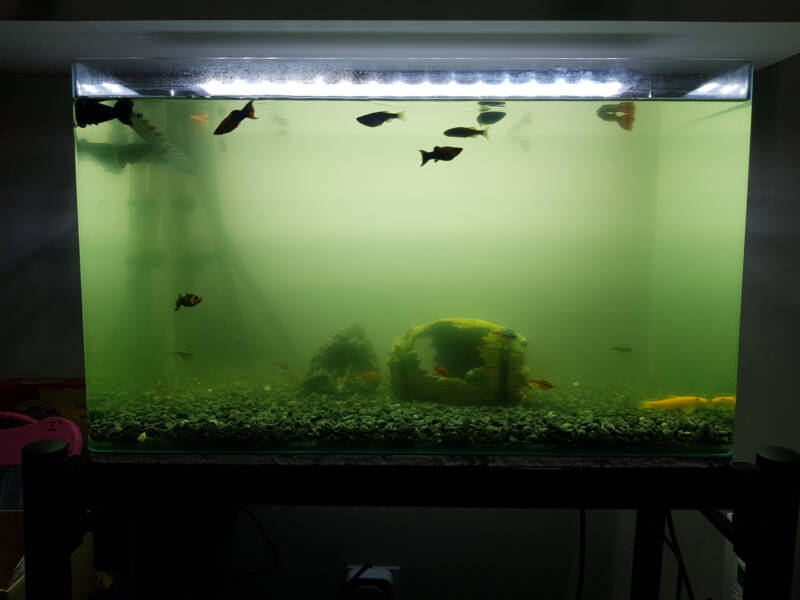
How to control and prevent algae in the aquarium?
There are some steps and unique treatments that you can undertake to control algae growth or just to prevent algae from overgrowing.
Testing water quality
First of all, you should test water parameters frequently. It is essential to measure levels of chemical processes within your aquarium with particular attention to pH levels. If you are thinking now about purchasing a testing kit, visit our site and find out about a drop checker method where you can also buy it.
Efficient filtration
Secondly, do not spare money on the filter media. High performing filter is one of the best ways to remove algae from our tanks. A high-quality filter can make a difference also in other things like removing other debris so that this purchase will pay off.
Algae eaters
Furthermore, you can serve the algae up for dinner. There are types of algae-eating fish that will be delighted to consume your problem. There are many varieties of algae-eating fish i.g:
-
most Angelfishes
-
Siamese algae eaters, also known as siamese flying fox
-
Otocinclus catfish
Additionally, there are also other algae eaters. We may point to our algae-eating shrimp like i.g. Takashi Amano shrimp or red cherry shrimp.
Last but not least, there are snails like i.g. Ramshorn snails that are perfect algae eaters.
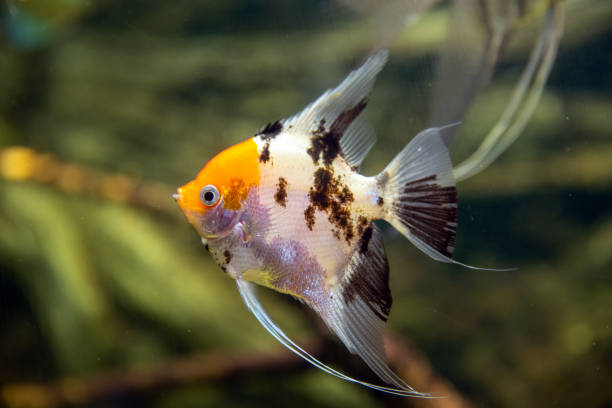
Light
The next thing is the placement of our planted tanks or fish tanks. If algae grow too fast, your aquarium may take too much light. Try to position it a little further to avoid taking direct sunlight. If that is not possible, you can cover your window with a curtain or something like that. Excessive light is probably the main reason for algae overgrowth, so find the right place.
Cleaning
Removing the algae mechanically is also an excellent option to get rid of them.
Firstly, clean your plants if the algae grow on leaves and stems. A solution of 5% bleach may help destroy the extra algae.
Besides, use the algae scrubber to remove them from the aquarium walls and other decorations. You may collect the algae if you see them sitting on a substrate or vacuum the substrate.
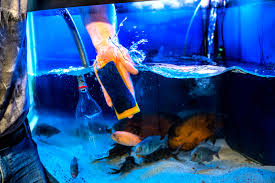
Water changes
Do not forget about performing frequent water changes. You should not change all the water at once. Chlorine that is within tap water is harmful to fish. You can't get rid of all the compounds, such as nitrate, that accumulate in the aquarium water but to keep those levels under control, we dilute them by water changes. If not, too high levels can contribute to algae growth.
Plants
As was mentioned before, plants absorb nutrients that algae thrive upon, so it is good to have some plants in your tank. Planted tanks can have fewer problems with algae than fish tanks.
Summary
Wherever we find the water and light, there are algae- the natural phenomenon. So it happens in our aquariums, too, whether we want it or not. It is impossible to eliminate algae, but nobody would like that. They can even be beneficial to our ecosystem by being a food source or a producer of oxygen.
However, nobody wants an invasion of algae in a tank because it can spoil the overall look of our aquascape, and because of that, you have to take into account some steps mentioned and described above.
